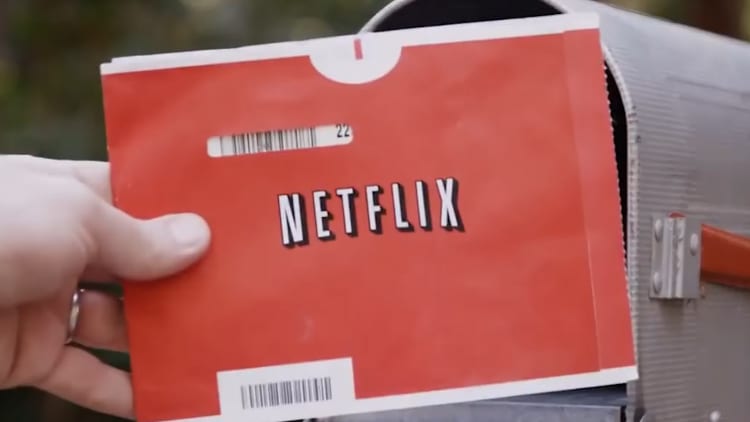Fifteen years ago today, Netflix went public. But how the co-founders came up with the idea for the revolutionary entertainment service is still unclear.
Originally, CEO Reed Hastings told several outlets said he got the idea for Netflix after Blockbuster charged him a $40 late fee for "Apollo 13." But co-founder Marc Randolph, who left the company in 2002, said the tale was a "convenient fiction" to explain why the company was better than its competitors, according to CNET.
Instead, Randolph claims the company was started when he and Hastings decided they wanted to create "the Amazon.com of something" in 1997, The Washington Post reported. They decided on shipping DVDs because customers were willing to buy them online and they were strong enough to mail. Since they couldn't get a DVD — which was new technology at the time — they mailed a CD a few blocks to see how it would hold up. When it arrived in one piece, they decided to start Netflix.

Hastings' story has changed a few times. Earlier this year at the Mobile World Congress in Barcelona, Spain, Spain, he said the idea stemmed from a math problem about the bandwidth of a station wagon carrying tapes. To solve the problem, a person would have to figure out how many tapes could fit inside the vehicle, how much data the tapes could hold and how quickly the car could get to a given destination.
It led Hastings to think about how much data a DVD could hold and how quickly you could disseminate that information through the mail, he said. Eventually, he thought the internet would make it possible to deliver things even faster.
Hastings had always been vocal about his belief in streaming video. In an as-told-to piece for Inc. in 2005, Hastings said the company was preparing itself for an internet-based future, although he also said he thought Netflix had at least a decade left of dominating DVDs. The company introduced streaming content in 2007, just two years after the article was published.
"Movies over the internet are coming, and at some point it will become big business," he told Inc. at the time. "We started investing 1 percent to 2 percent of revenue every year in downloading, and I think it's tremendously exciting because it will fundamentally lower our mailing costs. We want to be ready when video-on-demand happens. That's why the company is called Netflix, not DVD-by-Mail."
And in that same Inc. article, Hastings admits there was no flashy origin story.
"Netflix was originally a single rental service, but the subscription model was one of a few ideas we had — so there was no Aha! moment," he said.


